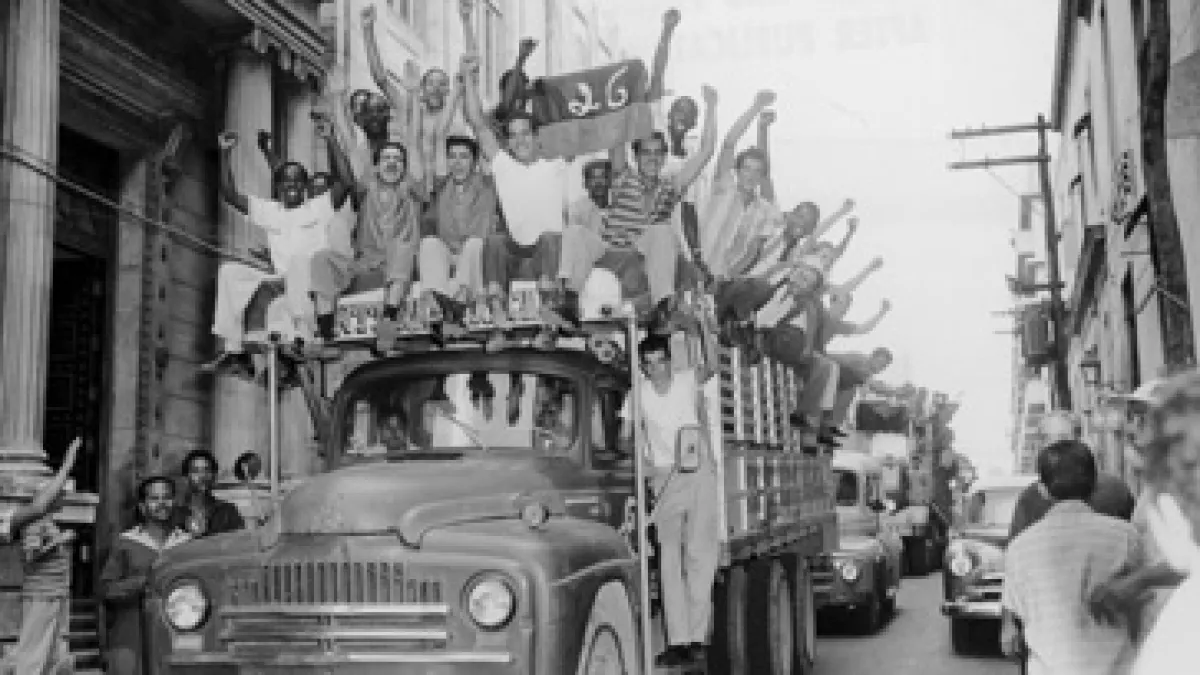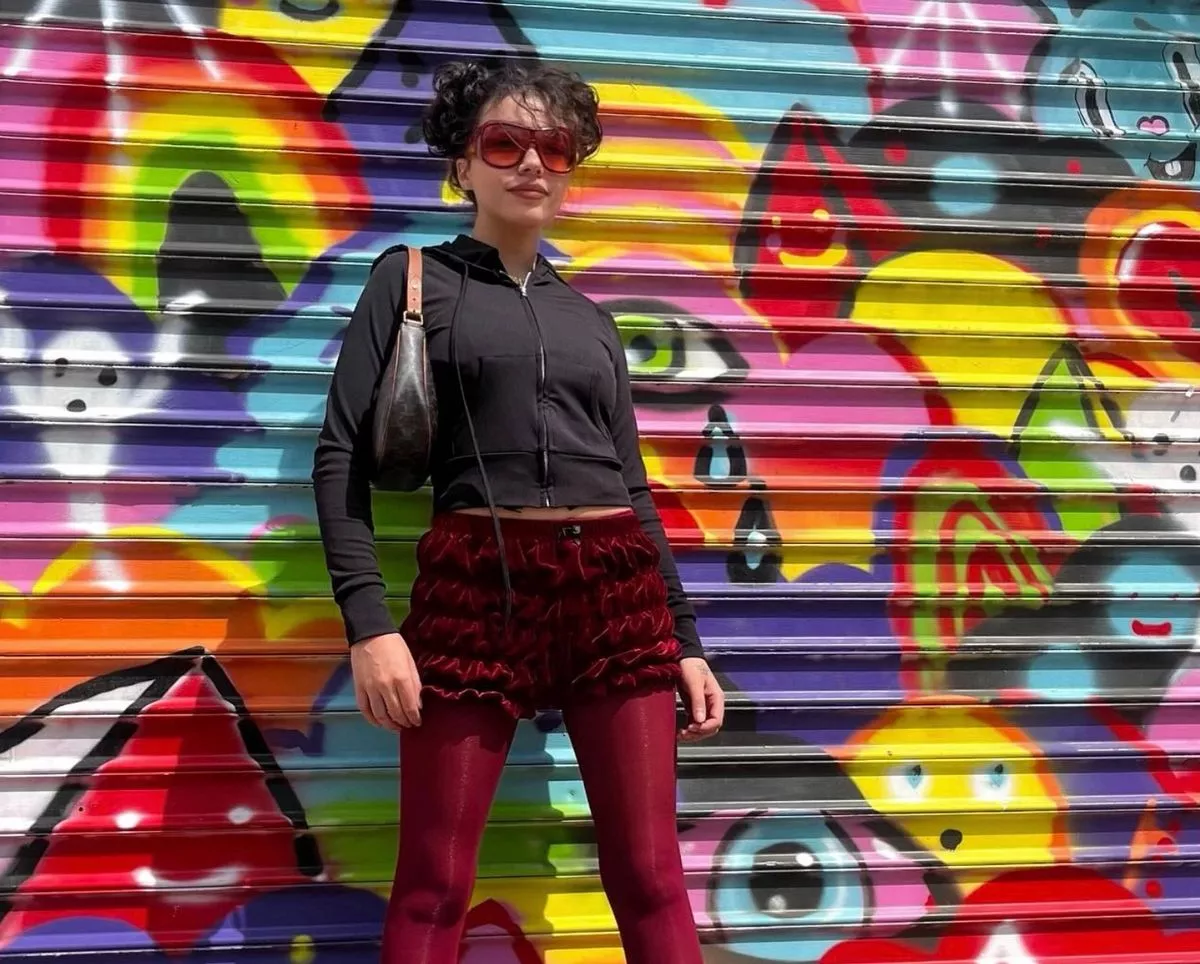
Cuban Revolution: An Armed Conflict That Shook the World and Gave Rise to Legends
"A group of neighbors gathered around a table in a courtyard, celebrating a holiday with music and occasional speeches from the organizers, while food slowly simmers in a pot." – This is how Danilo Garcia remembers commemorating significant dates of the Cuban Revolution, one of the most important historical events of the last century.
"That’s a Cuban tradition – both young and slightly older people gather on such occasions," says the 33-year-old photographer, who has been living in Belgrade since last year, to BBC Serbian.
However, in recent decades, this kind of celebration has begun to fade away, primarily because of newer generations that he describes as “disinterested.”
The state still nurtures the tradition by celebrating major national holidays with parades, larger gatherings, and other festivities, but with “fewer and fewer people attending.”
Fernando Almeida claims that over the past three years, during these festive days, the streets of Cuban cities have been engulfed in a “completely devastating and frightening silence because no one wants to celebrate.”
“Just an occasional table in the neighborhood where members of the Committee for the Defense of the Revolution sit for a few hours listening to music, pretending to be happy, and playing dominoes before going back home,” says the Cuban dissident now living in Belgrade.
The Committee for the Defense of the Revolution (Comités de Defensa de la Revolución – CDR) is an organization with millions of members, primarily aimed at providing assistance and support to the local community, but also at reporting counter-revolutionary activities.

How the Bay of Pigs Invasion Started and Failed
The Cuban Revolution began on July 26, 1953, with an attack by a group of rebels led by future president Fidel Castro on the Moncada Barracks in Santiago de Cuba, a city in the southeast of the country.
“It represented a combination of rebellion, rage, and struggle against disenfranchisement,” says Doctor of Historical Sciences Sanja Radović to BBC Serbian.
She explains that “the strong popular support makes it entirely authentic and one of the last revolutions of its kind,” as well as a popular uprising “that was in no way imported from abroad.”
After the failed initial action in which dozens of fighters died and several, including the rebellion leader Fidel and his brother Raul, were arrested, a few years of silence followed before the revolution entered a new armed phase.
The uprising ended with the overthrow of dictator Fulgencio Batista and the victory of the revolutionaries in early January 1959, ultimately bringing Fidel Castro to power after one of the most successful guerrilla campaigns in history.
In addition to literacy campaigns, the establishment of clinics across the country, agrarian reforms benefiting ordinary people instead of large landowners and foreign companies, the revolution also triggered a massive wave of emigration, suppressed dissent, and established a one-party system.
Why Did the Cuban Revolution Erupt?
In the second half of the 19th century, Cuba waged wars for independence against centuries-long Spanish colonization.
The final conflict broke out in 1895 and ended after U.S. intervention in the spring and summer of 1898 as part of the so-called Spanish-American War.
The Republic of Cuba formally gained independence from America in May 1902, but Washington, under the earlier Platt Amendment (repealed in 1934), retained the right to intervene in domestic and foreign affairs by incorporating it into the new constitution.
This was followed by decades of instability, corruption, economic crises, frequent U.S. interventions, uprisings, and coups.
After one such coup, Fulgencio Batista came to power for the second time in March 1952.
In the next six years, his rule in Cuba was marked by a high level of corruption, a repressive military dictatorship, and support for American interests on the island.
“American capital dominated the Cuban economy in general, particularly the sugar industry,” says Steve Cushion, a senior research fellow at the Institute of the Americas at University College London, in a written response to BBC Serbian.
Exports of this commodity were also controlled by the U.S., and the fall in sugar prices in the early 1950s led to an economic crisis.
Sanja Radović notes that Batista’s government was also characterized by “cooperation with the American mafia and local landowners in exploiting the local population.”
Havana, the capital of Cuba, was at the time “a hub for drugs, gambling, and prostitution for Americans.”
“Extreme social inequality and complete political, economic, and social disenfranchisement of the population—that was the picture of Cuba on the eve of the revolution,” says the historian.

The Cuban Revolution from the School Bench
Although the revolution is part of the education system from the earliest grades, young Cubans receive their first insights into this important historical and national event even before starting school.
“It’s in a way omnipresent throughout the country in terms of cultural mindset; it’s essentially everywhere, not just in schools – you’ll find it on TV on a daily basis,” says Danilo Garcia, a 33-year-old Cuban.
He says that the topic of the Cuban Revolution is introduced in the early grades of primary school, mostly in subjects related to national history, and then studied more thoroughly in the final grade.
Primary school in Cuba lasts six years, followed by three years of so-called secondary school, where more complex historical lessons, including the revolution, are taught in the later grades.
“One of the two textbooks deals more deeply with the revolutionary process, and you learn about Fidel Castro, Che Guevara, and other participants,” explains Garcia, a professional photographer.
Fernando Almeida, a lawyer and human rights activist, says there are “several layers” of learning about the revolution in Cuban schools through “thorough mythology.”
“When you're a kid in elementary school, they give you little songs with lyrics like ‘the militia is good, weapons are good, in the good hands of the militia our country is happy, Fidel Castro is a righteous man’ and so on,” says the 31-year-old Cuban who studied in Havana.
He moved to Belgrade in February 2022, where he was granted asylum a year later as a political dissident.
In July 2021, thousands of people took to the streets of many Cuban cities, protesting shortages of basic goods, soaring prices, civil liberty issues, and the state’s handling of the coronavirus pandemic.
They demanded the resignation of President Miguel Díaz-Canel, who blamed the protests on America, claiming it manipulated demonstrators to incite “social unrest and regime change.”
Policy Shift: Cuba Opens to Foreign Investors
The current president of Cuba took office in 2018, succeeding Raul Castro, who had assumed leadership a decade earlier after his older brother Fidel stepped down.
The police violently broke up the protests, and more than 1,395 people were arrested.
A year later, the chief prosecutor announced that 381 people had been sentenced to prison, 36 of them to 25 years behind bars.
Legal aid was provided by Almeida, who says that for the state, the Cuban Revolution is “a very important ideological event and justification for everything,” while ordinary people do not care about it.
“No one thinks about it, no one cares about the revolution or what happened 64 years ago,” says the lawyer.
However, he points out that there are also “other layers of people who believe it was a betrayal.”
“There are also those who had to emigrate or were expelled from the country and see the revolution as the greatest tragedy of our era,” Almeida says resignedly.
He adds that there is also a “minority of followers, people who fanatically believe in what they are fed and are happy.”
From the Barracks Attack to the Mountain Struggle
The Cuban Revolution, which unfolded in several phases, began on July 26, 1953.
Young lawyer Fidel Castro led over 100 armed rebels in an assault on the country's second-largest military base – the Moncada Barracks in Santiago de Cuba, aiming to overthrow Batista, whom he accused of corruption and tyranny.
The attack was thwarted, and the trained army completely defeated the rebels.
Historian Radović says the “core group of rebels was shattered,” many were killed, and some were sentenced to long prison terms but were soon pardoned.
Among them was Fidel Castro, who, after being amnestied in May 1955, left the country and went to Mexico.
There he met Argentine doctor and revolutionary icon Ernesto Che Guevara, and later began reorganizing the group with his brother Raul to return home and resume the fight.
The “July 26 Movement” was born.
In early December 1956, Fidel Castro and 82 rebels reached Cuba aboard a small vessel named Granma, landing in the southeast of the island “to die or finally spark a revolution.”
For most, this was their final mission, which in a sense marked the start of the second phase of this armed conflict.
Only 12 fighters survived the ambush by Batista’s forces and retreated to the dense forests of the Sierra Maestra mountain range, opting for guerrilla warfare.
“The justice of the proclaimed cause in the eyes of ordinary people and the hatred toward Batista’s regime contributed to the growing popularity of the rebels each month, until the movement reached critical mass sufficient for a coup,” says historian Radović.
Three Wings of the Movement and Final Victory
The rebels included people of diverse political views.
Thus, the revolution, which was not ideologically defined, was supported by various groups – from communists and prominent entrepreneurs to religious leaders.
In addition to the mountain guerrillas, the revolutionary movement included students resisting in the cities and an underground labor movement “ready to fight for wages and conditions despite the class collaboration of the corrupt union bureaucracy,” says historian Cushion.
He explains that the increasingly widespread rebellion led to a regime crisis, prompting a shift in strategy in early 1957 with more determined confrontations with armed guerrillas.
“From that moment on, the regime used death squads, torture, and kidnappings in an attempt to force organized resistance to submit to their rule,” emphasizes the author of the book *A Hidden History of the Cuban Revolution: How the Working Class Shaped the Guerillas’ Victory*.
Repression and brutality by the Cuban dictator continued throughout 1958.
The armed phase of the revolution ended on January 1, 1959, with Fulgencio Batista fleeing to the Dominican Republic, shortly after rebels led by Che Guevara captured the city of Santa Clara in central Cuba.
The military dictator left the island with several hundred million dollars and settled permanently in Portugal, notes historian Sanja Radović.
The revolutionaries then entered Havana, where Fidel Castro marched triumphantly on January 8 following a victory procession across the island.
A Series of Reforms, Later Communism, and America’s Reaction
Soon after the armed uprising ended, Fidel Castro became prime minister of Cuba and initially formed a liberal-nationalist government.
His early program included a number of changes to the existing system, such as agrarian reform that limited farm size and led to the expropriation of large estates, nationalization of foreign (American) companies, the founding of schools and clinics across the island, and more.
Historian Radović notes that immediate steps were taken to increase industrialization, eradicate many diseases, and rapidly raise literacy levels.
“Among the achievements of the Cuban Revolution, one must also include the massive wave of emigration – about 200,000 people left the island after the revolutionaries came to power,” says the doctor of historical sciences.
She also believes that, beyond the armed uprising, the term “Cuban Revolution” encompasses the resulting transformation of Cuban society – a broader social and political revolution that unfolded over the following years.
Unlike many previous socialist revolutions led by communists, here the ideological shift to the left happened at the end.
“At a national leadership meeting of the ‘July 26 Movement’ held in May 1958, it was decided to cooperate with the Communist Party (Popular Socialist Party),...





